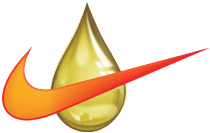- Armor Blog
- Products
- Helpful Guidelines for Purchasing Lubricant Oil

Lubricant Oil Application and Monitoring
The correct lubricant Oil application and monitoring are only part of the equation when it comes to getting the most out of lubrication and increasing device availability. While they are critical elements, the first step is to acquire the proper lubricant Oil.
Lubricants are vital for cars, regardless of whether we’re discussing a private car, racer, heavy-duty truck, or something else. Without lubricant Oil, metal-on-metal friction would quickly grind everything to a halt. In spite of this, obtaining lubricants can be difficult, especially for people who are unfamiliar with the lubricant sector.
What are Lubricant Oil Specifications?
Automotive lubricant Oil guidelines involve the study of lubricant properties and features for categorization and testing reasons, as well as their compatibility with other components, such as oil seal elastomers, with which they will come into contact.
Things to Consider Prior to Purchasing Lubricant Oil
Automobile maker and model
Understanding the make and model of your car is the first step in selecting the proper engine oil. New high-performance vehicles are being designed to increase fuel economy, and new oil formulas have been created to accommodate these improvements.
Driving environment
Regardless of whether you reside in a hot or cold region or frequently drive on paved or unpaved roads, you should consider the driving conditions you typically encounter. Various environments can stress your car in various ways, such as engine oil changes need to be made. When determining what type of motor oil is best for you, it is crucial to consider the driving and living conditions in your area.
Varieties of lubricant Oil
Once you know the vehicle’s brand and model, you can choose between mineral and synthetic engine oil. The base oil accounts for between 80 and 90 percent of an engine oil’s composition, making the choice of oil type crucial. Each type of oil has advantages and disadvantages; therefore, it is essential to know which type of oil is best for your vehicle and driving style.
Important Details to Know
When purchasing lubricant Oil, such as motor oil, gearbox oil, power steering fluid, or something else, there are a number of similar factors to consider. Including the following:
Viscosity
Viscosity is a measurement of a lubricant oil capacity to lubricate, its effectiveness at varying temperatures, and its abrasiveness. Gel strength is the most significant aspect to consider when selecting lubricant oil since it describes the performance of the lubricant oil in engine applications. If the viscosity is incorrect, the engine will not receive the necessary protection from heat and friction.
Pour Point
When selecting motor oil, the “pour point” of the product is a crucial consideration. This is the temperature at which lubricant oil flow is optimal.
Lubricant Oil Cloud Point
The point at which any waxes in the formulation begin to separate from the lubricant itself is known as the cloud point. In some situations, waxes can improve functioning, but they must be strictly regulated because they can clog filters when they begin to separate from the oil, causing issues such as decreased oil flow and higher system pressure.
It is important to know the flashpoint of any lubricant because, at this temperature, any vapor present above the liquid will ignite if it is exposed to an incendiary device (spark). If a lubricant’s flashpoint is below 60 degrees Celsius, it is combustible. Typically, the flashpoint of motor oil is 225 degrees Celsius.
Summary
The manufacturer specifies the viscosity class that a vehicle’s engine needs. You should only fill the engine with certified oil of the specified viscosity class. Otherwise, the engine cannot generate the requisite oil pressure. Overpressure can cause motor seals to be overloaded and damaged. The engine may leak, allowing lubricant oil to escape. Inadequate lubrication in the engine compartment due to insufficient pressure leads to increased wear.




 Spear Lubricants
Spear Lubricants Armada lubricant
Armada lubricant Ace lubricants
Ace lubricants Perfect lubricants
Perfect lubricants Enzo lubricants
Enzo lubricants Lawrence lubricants
Lawrence lubricants